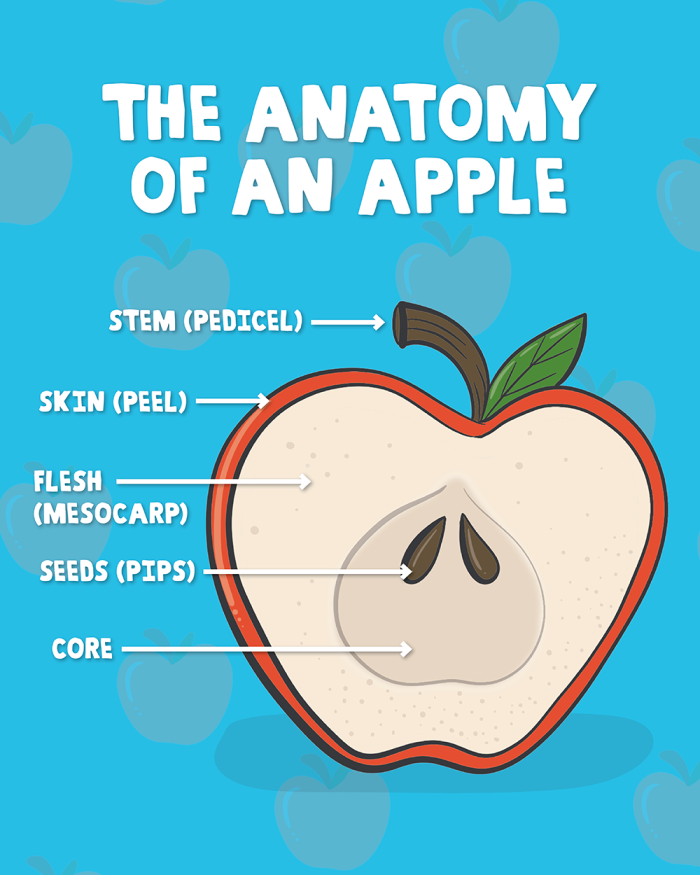Why Do Apples Want to Be Eaten?
Everyday STEM Trends in STEMDate November 4, 2025
Est. Reading Time 3 mins
From family trips to the orchard to crisp lunchtime snacks or a fresh baked pie, apples are a classic seasonal treat! While they come in red, yellow and green, they sure take the gold when it comes to versatility and nutrition. We all know what apples are, but has your curious kid ever wondered about the function of different parts of an apple? Or have they inquired about the squishy brown apples that may have sat in the fruit bowl a few days too long? It’s all science!
The Parts of an Apple
An apple tree grows fruit to disperse its seeds, leading to new apple trees in other locations. Each component of the apple plays an important role to help the fruit reach its goal – getting eaten. As animals consume the fruit, they unwittingly aid in the planting of new apple trees.

- Stem (Pedicel) – The stem is found at the top of the apple. It is a channel for the tree to provide water and nutrients necessary for the fruit to grow while keeping the apple attached to the tree.
- Skin (Peel) – The skin acts as a layer of protection surrounding the flesh and seeds, and its bright color draws the attention of passing critters.
- Flesh (Mesocarp) – Under the skin is a sweet, light-colored flesh that attracts hungry animals and provides them with nutrition.
- Core – Found in the center of the apple, the core is more fibrous than the surrounding flesh and encases the apple’s seeds. You’ll notice the change in texture if you bite into an apple – this part is tough!
- Seeds (Pips) – In cavities within the core are small, dark seeds. They are vital to the apple as planted seeds allow new apple trees to grow.
Extending Freshness
We’ve learned that an apple’s goal is to be eaten so that its seeds can travel with their new host until they are eventually planted elsewhere. An apple is good at its job – crisp, juicy and sweet, it is a real treat to bite into a fresh apple. But what happens when it gets brown, soft and gooey? You can bet the apple seems much less appetizing and can eventually become unsafe to eat.
As they ripen, apples give off a gas called ethylene, which cannot be seen or smelled. While fruit gets sweeter as it ripens to a certain point, overripening causes the decay that sends our produce into the compost! To preserve produce such as apples for longer, horticulturalist Sylvia Blankenship and biochemist Edward Sisler identified 1-methylcyclopropene (1- MCP), a novel compound that significantly extends the freshness and storage life of fruits like apples by delaying the effects of ethylene. Their breakthrough helped to reduce food waste and enable year-round access to fresh fruits. Commercialized as SmartFresh™, 1-MCP is used on 50% to 70% of the apples harvested in the United States!
Keep Learning
Encourage your child to stay curious about the world around them and keep reading our blog to uncover more examples of real-life STEM to share.